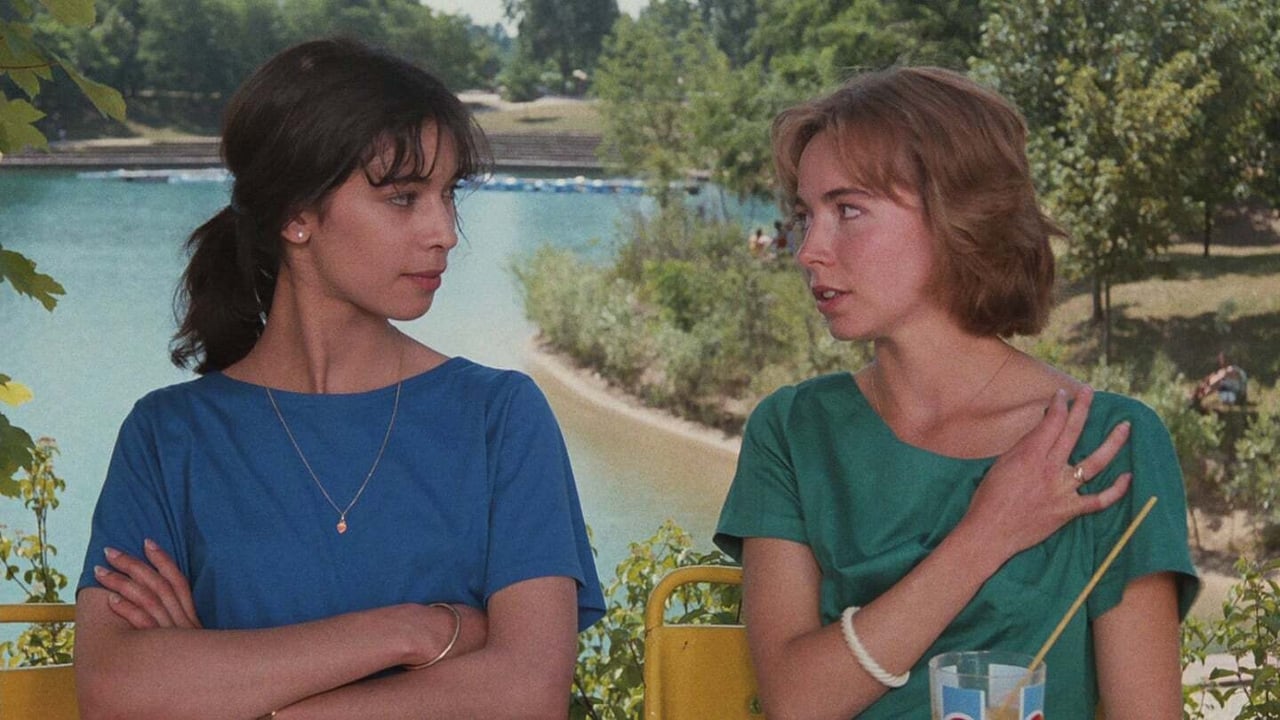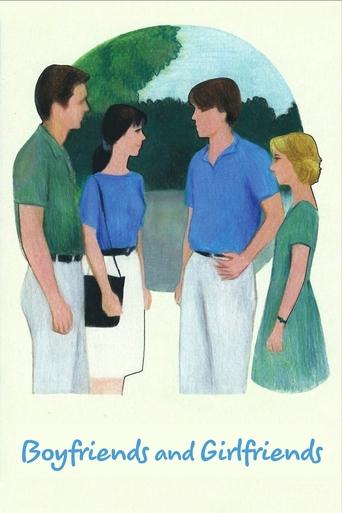

Truly Dreadful Film
... View MoreGood concept, poorly executed.
... View MoreA film with more than the usual spoiler issues. Talking about it in any detail feels akin to handing you a gift-wrapped present and saying, "I hope you like it -- It's a thriller about a diabolical secret experiment."
... View MoreThe movie's neither hopeful in contrived ways, nor hopeless in different contrived ways. Somehow it manages to be wonderful
... View MoreI recall my first watching this on TV in my early twenties alone on a Friday night and thinking it would pass the time...little did I know that I would slowly fall in love with this film.The convincing performances of all those involved in particular, the tenderness of the romance between Blanche and Fabien is truly wonderful, mimicking true love with uncanny accuracy -something no film anywhere has achieved so authentically. Their scenes on the towpath are so well played , one feels a voyeur intruding upon what should be a private moment. No other film maker could have made this without exploiting it -only Rohmer has the respect for romance to leave things to the imagination.To my surprise, I found myself living the film myself a couple of years later and Rohmer's authenticity was confirmed. Watching this takes me back to being a young man again and the wonder of love.From this start , I developed an affection for Rohmer's work, enjoying Rendez-Vous A Paris and A Summer's Tale but for me, this is THE ONE.
... View MoreA young woman, Blanche (the lovely Emmanuelle Chaulet), works in the City Hall of a trendy New Town near Paris (somewhat to his discredit, Rohmer's films always occurs in middle class and upper middle class milieus, never in working class neighborhoods or in the immigrants building projects). Having recently arrived there, Blanche lives quite a lonely life, until she becomes friends with another young woman, Lea (Sophie Renoir), through which she met her boyfriend Fabien (Eric Viellard), and an acquaintance of the couple, Alexandre (François-Eric Gendron). Basically, the movie follows the time honored plot of exchange of relationships. A is with B, and C with D, but then A will start a liaison with D, which will make C jealous, and would start going with B in revenge and so forth. The title in French is a pun: the boyfriend of my friend would (could) become my boyfriend. Rohmer is known to be a political conservative, but here he is hardly a moralist, since he examines the sexual freedom of today's youth without condemning it. The movie is slow and talky, but these characters are believable and appealing (if somewhat shallow and a bit better looking than ordinary).
... View MoreA young woman, Blanche (Emmanuelle Chaulet), is working in the City Hall of the New Town of Cergy Pontoise, in the north west of Paris, on the banks of the river Oise. Alone, recently arrived in the Parisian Region, she befriended another young woman, a computer science student finishing its school, Lea (Sophie Renoir) with which she met her boyfriend Fabien (Eric Viellard), and an acquaintance of the couple, Alexandre (François-Eric Gendron). The French title (l'ami de mon amie, the friend of her friend) is more explicit than the American or English one. (Boyfriends and Girlfriends): A reference to the saying 'the enemy of my enemy is my friend' but distorted to 'the friend of my friend is my friend'. This title, an example of the irony of Eric Rohmer, the boyfriend of my friend could become my (boy)friendThis film belongs to the cycle Comedies and Proverbs, the former term being as important as the latter one in order to understand the meaning of the film. This cycle, filmed in the eighties followed the precedent older cycle, six Moral Tales. Where as the latter concentrated on middle aged married man tempted by another woman but who finally, in relief, returned to his wife, Rohmer in the series of Comedies and Proverbs, turns his attention towards younger female characters. But because it is comedy, the tone is also much lighter and ironic. Here he examines the sexual freedom, (which in fact he disapproves but never condemns overtly in his films), its consequences and how the younger generation is trying to live with a new set of rules.One of these rules, never sleeps with the friend of her or his friend, as often, in earlier time with the traditional moral, is finally broken. But there is more than a tale of love and seduction. It is a study of characters and how love creates a web of relationship among this small group of young urban professionals. As the relationships between them evolve the spectator finally feels some sympathy for the protagonists, at first not very likable. Especially Blanche who is the center of the entire plot, if one can tell of real plot in Rohmer film. Alone self-pitying, infatuated with the irritating, pretentious, serial seducer Alexandre, she blossoms when stricken by real love. She is opposed to her friend yet rival, Lea, physically as well mentally. With dark hair and tall, Lea is freer sexually than the small light-haired Blanche awaiting the great love for two years. The quest of Blanche is the perfect true love, not just an adventure. Ironically, at first she blindly falls in love with the great local seducer Alexandre.With discreet symbolism, Rohmer gives clues about the different players. Blanche (white in french), around whom the whole film revolves demands only a pure love. As Delphine in Summer (Le Rayon Vert), the precedent film of the same cycle, the very absence of love, this void, fills here with anguish. Its flat at Cergy Saint Christophe is decorated in minimalist white fashion, thus emphasizing the loneliness of its life. Blanche and Léa sport alternatively the same colors, green and blue, this swap of colors underlining the possible swap of boyfriends.Rohmer, because of its interest in urbanization (the DVD version contains a documentary he made earlier on industrial aesthetics), sets the action of the film in the New Town of Cergy-Pontoise, described as a quiet, modern, ultra clean Utopia. In fact the spectator sees the town only through Blanche eyes, mainly the pedestrian streets around the center, the banks of the river Oise, the Ricardo Bofil buildings where she lives. But I don't think the Cergy depicted could be viewed, as often said, as a reflection of a superficiality of its young 'yuppies' characters. The purpose of Rohmer was to see the impact of modern architecture on love life. But the answer is in the film: It changes nothing. On the contrary it amplifies or underlines the love relationship between the different characters.'L'ami de mon amie 'is an extremely enjoyable film, full of charm, thanks to the direction of Eric Rohmer and the talent of its young actresses, then in theirs early twenties, like the young women they play. The frozen moment of happiness at the end of the film, just before the credits contributes to its charm. But it is problematic: Have the protagonist found enduring love? Will their love relationship and in the same time, their friendship endure the strain of time? Nothing in fact is sure as irony is always present. But if ironic, Rohmer doesn't despise his characters. On contrary he shows a real tenderness and comprehension towards them, especially Blanche.One of the lighter films of Rohmer, of course very talkative, it is characteristic of all its work, with good mannered young people in search of love while searching themselves. Because of the minimalist direction, it has not aged much since its shot in middle of the eighties. Yet, you can glimpse of the fashion of its period in the clothes of the players if you pay attention on certain details Nowadays, Cergy has aged and worn out a little. Never the modern utopia ironically depicted by Rohmer, it is still a well maintained active town.
... View MoreI am not a fan of Eric Rohmer. The pace of most of his films is very slow, they are full of dialogue, and often I react to his characters with a distinct desire to slap them in the face and shout "get a life!".However, this one is different, it is a real gem. Yes, the pace is slow, yes the film is loaded with dialogue, but these characters are believable. We see relationships develop, new ones arriving on the scene and old ones being broken up. The drama is the drama of real life, the characters are ordinary (perhaps a bit better looking than ordinary) young people living in a Parisian suburb, there are no extraordinary things happening to them, just ordinary things. While Rohmer's story is realistic, it is still pleasantly realistic. It is just as romantically heart-warming as, say, While You Were Sleeping, but it does not have to force us to suspend our disbelief.One piece of advice many people will fail to appreciate: if you are a non-French speaker, try to see this in a dubbed version, not a subtitled one! The dynamics and meaning of the dialogue in this film is much more important than the original sound, not to mention that subtitles could hardly keep up with this amount of dialogue.
... View More